site search
online catalog
SCARCE INDIAN WAR US ARMY 1872 PATTERN SHOE ALTERED TO CAMP OR BARRACKS SHOE
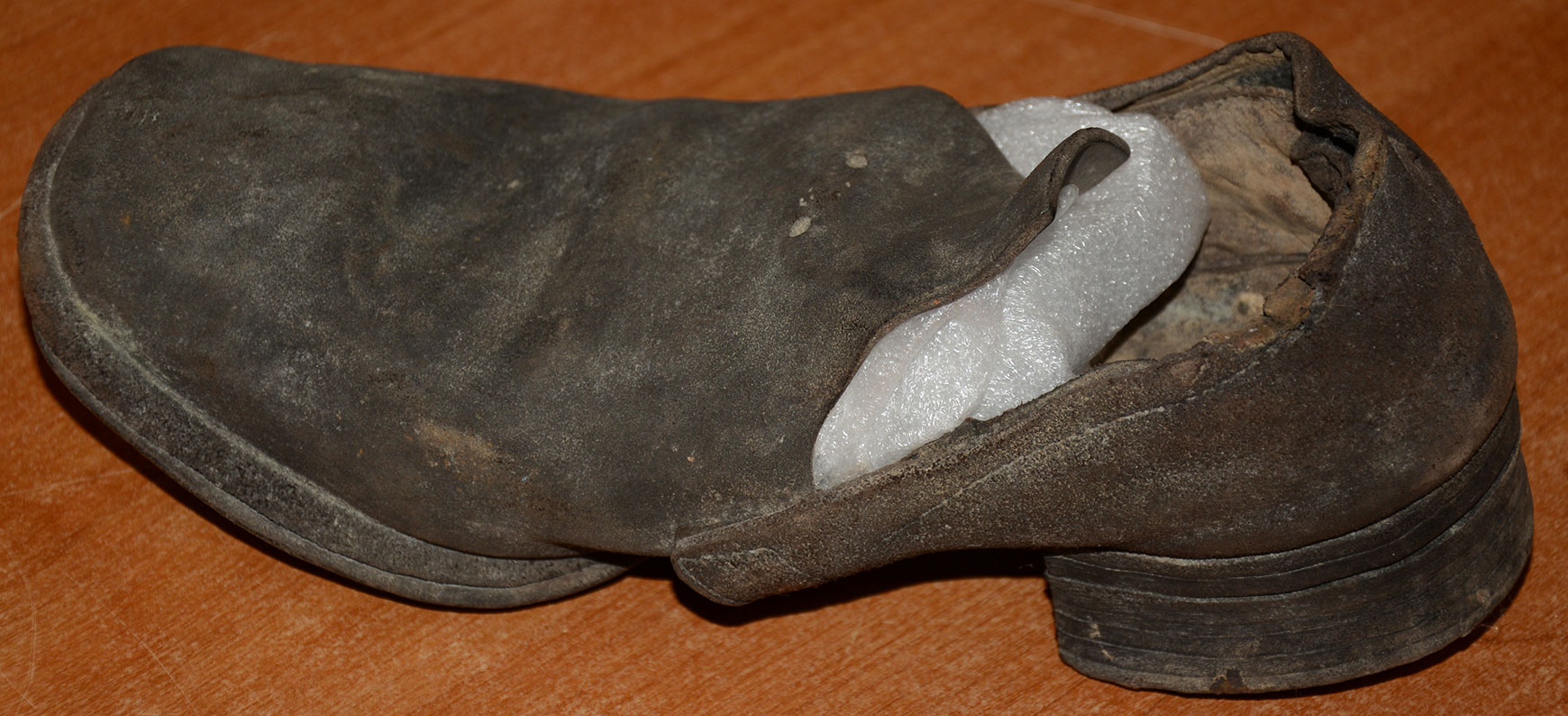
Hover to zoom

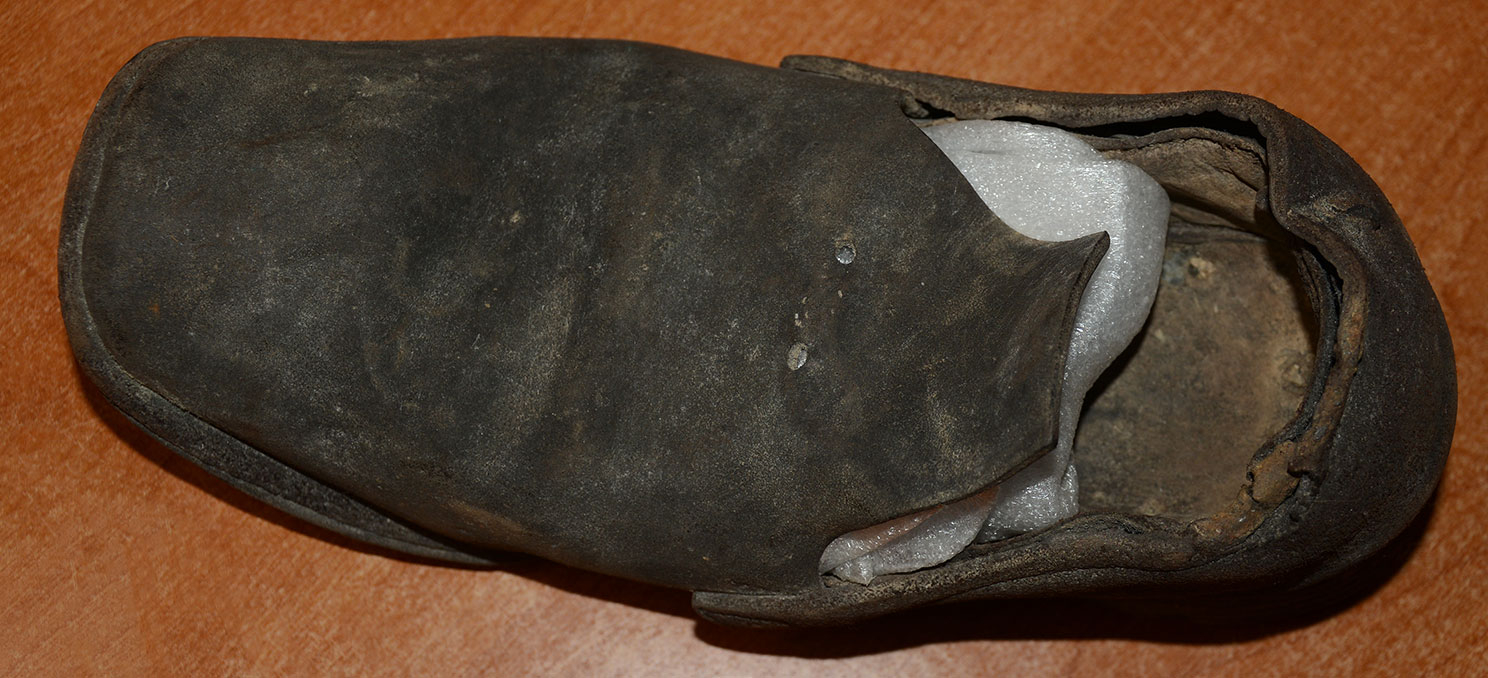
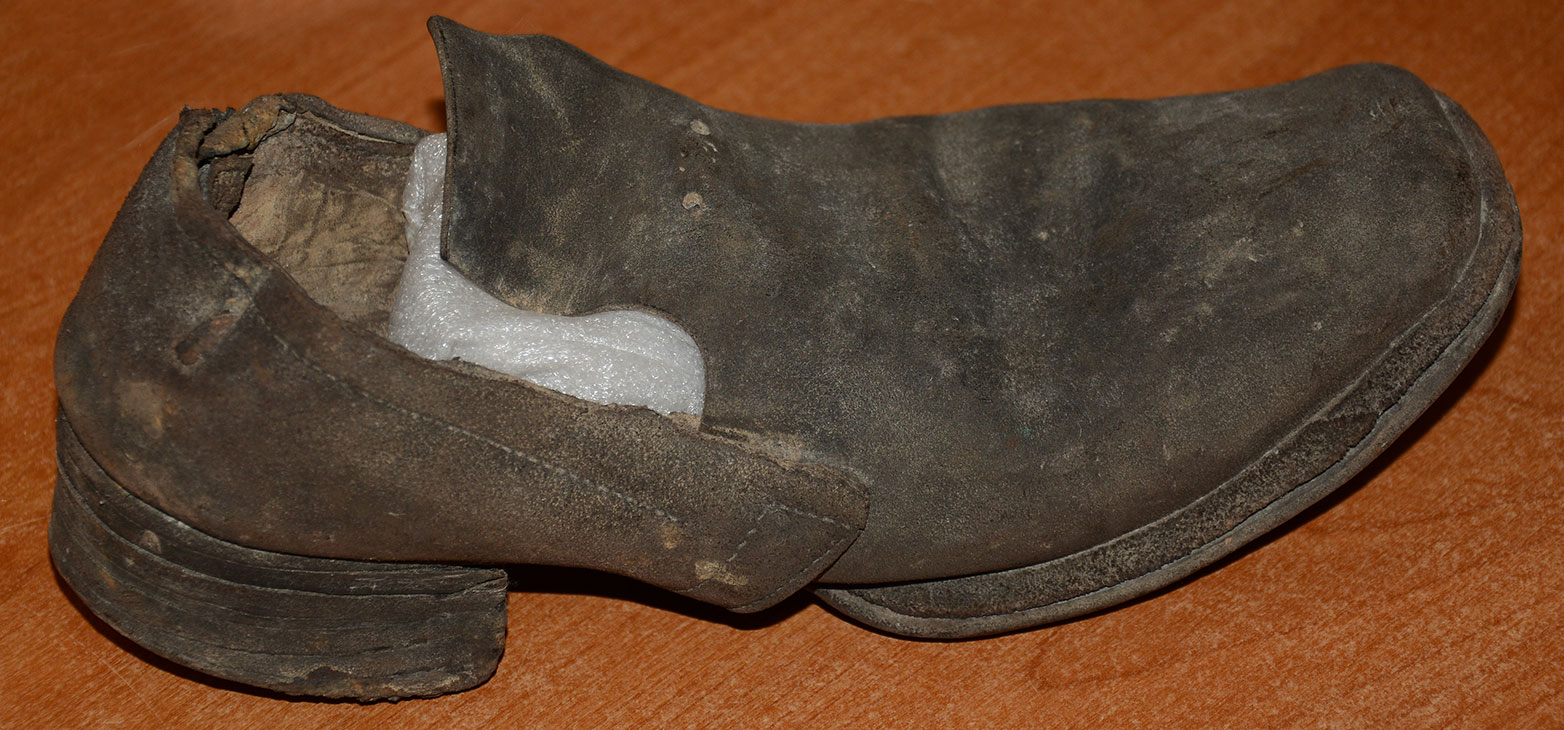
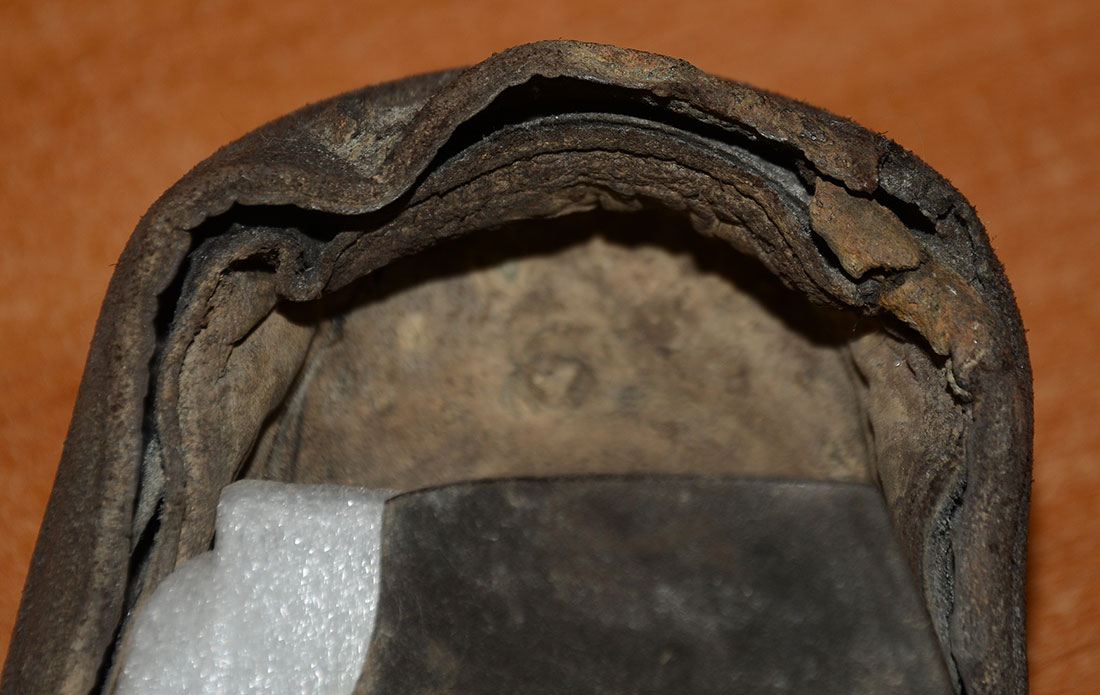
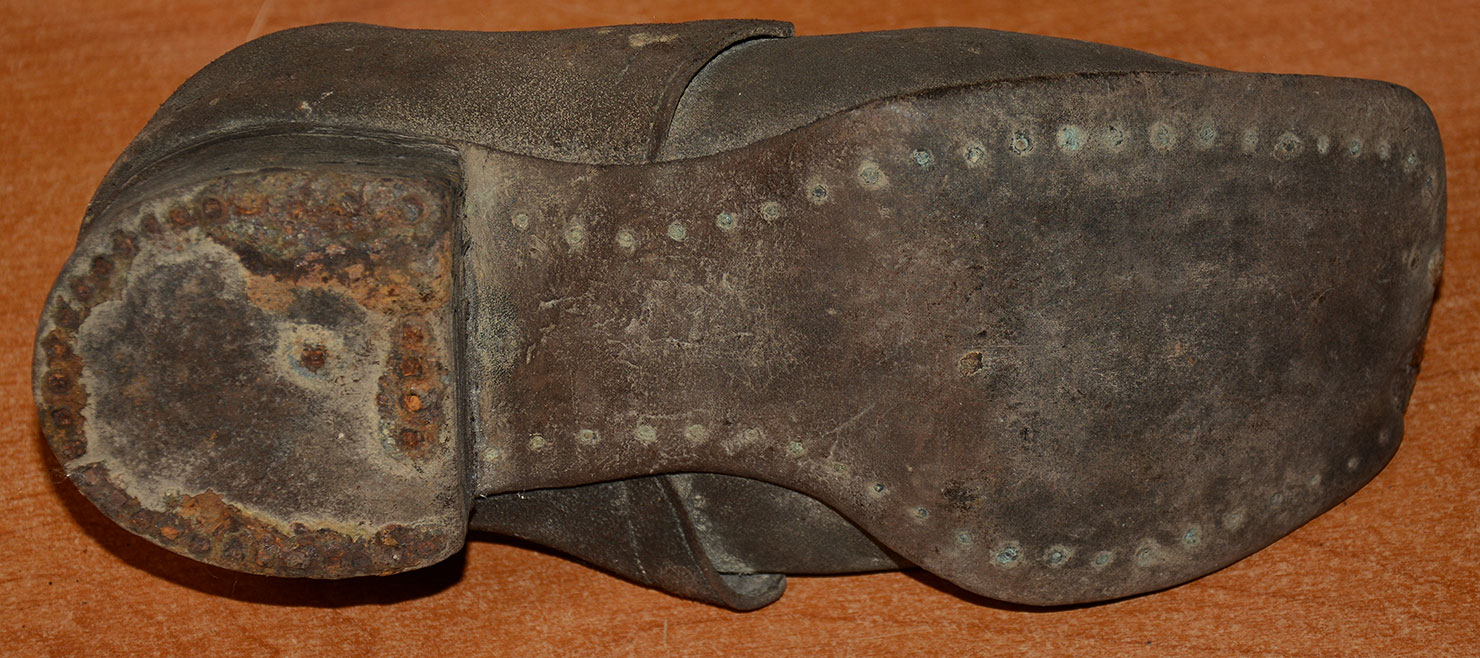
$1,250.00
Quantity Available: 1
Item Code: 1052-286
Shipping: Determined by Method & Location of buyer
To Order:
Call 717-334-0347,
Fax 717-334-5016, or E-mail
New pattern shoes and boots were introduced in the U.S. Army in 1872 and in use until the 1880s with a minor change in 1876 to a longer tongue. These shoes improved upon Civil War issue patterns mainly by using brass screws in the soles, rather than just pegs or sewing, to better withstand campaigning on rough and rocky ground such as the army operated over in the American southwest. This is a great example that is solid, very displayable, and shows alteration by a soldier into a more comfortable shoe for wear off duty around camp or in barracks by cutting away the uppers at the back just above the line of stitching used to secure the counter inside along sides and back of the heel. The tongue, of moderate length was left intact and still shows two holes for a shoelace or thong, though the quarters with the side holes were removed. The result is something like a modern loafer though much heavier duty. Underneath a trouser cuff it may not have been very noticeable and thus suitable for some fatigue duty as well.
The 1872 pattern was similar to the Civil War issue patterns, with square toe, rough-side out black leather uppers consisting of vamp and quarters, an interior counter at the lower back, holes for shoelace or thong, though with the uppers seeming to come up a bit higher on the ankle than the Civil War versions, and was modified slightly in 1876 with a longer tongue. This one is solid, can be handled, and displays well, though the leather is stiff and oxidized slightly toward brown, but with only a couple of small gray or white spots. The heel is complete and firmly in place with no gaps between the five layers and the nails in place, just showing some dirt and rust corrosion on the bottom. The brass screws are present and the sole is completely intact and solidly in place. We see only a little wear at the front edge, which exposed a narrow portion of the inner sole, but would have pulled loose from the screws and perhaps caused the soldier to discard it. It was only in the 1880s that the army acknowledged the need for a “post” or “barracks” shoe. Up to that point it was up to the soldier to buy something privately or modify an issue shoe in this fashion, though he had to be careful not to exceed his clothing allowance in so doing.
This is looks very much like a barn or attic-find from a veteran’s estate, but in fact was excavated at Fort Pembina, a US army fort established in 1870, where anaerobic soil conditions have yielded cloth and leather gear in remarkable states of preservation. (Think of the Roman fort at Vindolanda in Britain, where similar conditions are giving up near 2,000 year-old sandals, etc.) The fort was established by troops of the 20th US Infantry in 1870 and operated until 1895, when it was abandoned after a fire and the land later sold. This was excavated on private property with the owner’s permission.
The fort was situated in the Red River Valley in North Dakota near the Canadian border. Trading posts existed earlier in the area as part of the fur trade, and the first U.S. military post there was temporary- manned by a detachment of Minnesota troops in 1863-1864 following the 1862 Sioux uprising. In March 1870 a new fort was established south of the Pembina River and about 200 yards west of the Red River, completed by July and named in honor of Gen. George H. Thomas. The name was changed to Fort Pembina in September and the initial garrison consisted of two companies of the 20th US Infantry. Their main purpose was to provide security for settlers worried about Sioux returning south from Canada, but much of their duty involved escorting boundary surveys along the Canadian border and preventing Fenian raids heading north into Canada.
The fort included enlistedmen’s barracks, officers’ quarters, guard house, ordnance storehouse, company kitchen, root house, laundress’s quarters, quarters for civilian employees, hospital and hospital servant’s house, a barn for the “hospital cow,” quartermaster and commissary offices and storehouse, stables, wagon shed, etc. The garrison reached peak strength in 1878 of 200, but the average was about 125 enlisted men and 8 officers. An October 1885 return listed 97 men, 2 field pieces, 1 mountain howitzer, 100 rifles, 19 pistols, 23 mules, and 9 wagons. By 1890 the post had just 23 men, and after an 1895 fire destroyed some 19 buildings it was decided to abandon the fort rather than rebuild, the last detachment left in September. The property was turned over to the Interior Department and later sold in 1902.
This is a nice example of a scarce piece of essential army-issue gear: shoes were hardly the thing to be preserved by a soldier or his family in memory of his service. This has the added attraction of being modified by the soldier for comfort and to keep it in use, a problem likely much greater at a small frontier post like Fort Pembina, where resupply might be infrequent. [sr] [ph:L]
~~~~~~~~~~~~~~~~~~~~~~~~~~~~~~~~~~~
THIS ITEM, AS WITH ALL OTHER ITEMS AVAILABLE ON OUR WEB SITE,
MAY BE PURCHASED THROUGH OUR LAYAWAY PROGRAM.
CLICK HERE FOR OUR POLICIES AND TERMS.
THANK YOU!
Inquire About SCARCE INDIAN WAR US ARMY 1872 PATTERN SHOE ALTERED TO CAMP OR BARRACKS SHOE
Most Popular
Historical Firearms Stolen From The National Civil War Museum In Harrisburg, Pa »
Theft From Gravesite Of Gen. John Reynolds »
Selection Of Unframed Prints By Don Troiani »
Fine Condition Brass Infantry Bugle Insignia »
Large English Bowie Knife With Sheath 1870’S – 1880’S »
Imported (Clauberg) Us Model 1860 Light Cavalry Officer's Saber »
featured item
A CONFEDERATE SURGEON'S GREATCOAT, SASH AND SHIRT
Dr. J. P. Rasser was contracted by the Confederacy and among his duties in Georgia was the examination of Conscripts for the Army. THE OVERCOAT or army great coat is certainly "Homespun" that is a woven woolen fabric originally made from homespun… (1268-706). Learn More »


